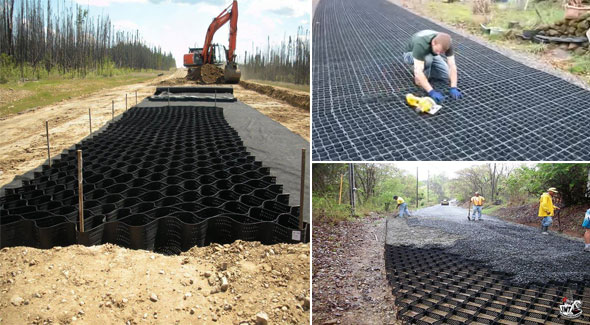Stages Involved in Road Construction
- Concrete Cost Estimator
- Concrete Continuous Footing
- Landscape Bidding and Estimating
- Construction Cost Estimating
- Concrete and steel cost estimation
- Construction Cost Estimate Breakdown
- Construction Estimating Worksheet
- Home Construction Cost Estimate
- Estimate Pricing Sheet
- Sheet for General Contractor
- Construction Cost Estimate
- Labor Materials Cost Estimator
- Masonry Estimating Sheet
- Sheet for Building Contractor
- Construction Schedule Bar chart
- General Cost Estimator Sheet
- General Construction Estimate
- Building and Road Estimating Sheet
- Detailed expense estimates
- Door and Window Takeoff Sheet
- General Construction Cost Estimating Sheet

Road construction is a time consuming and long running process that is based on the size of the future pathway.
It comprises of various construction crews and plant machinery and necessitates proper planning and different assessments along with ecological and structural assessments. As soon as the construction is started, there exist various phases prior to utilized the road by the vehicles.
Clearing and Excavation: The area through which the road will be constructed should be cleared of all vegetation, which involves the elimination of trees, shrubs and bushes. Excavation vehicles should be used to excavate and take out rocks and stones from the future road's pathway. To protect the cleared land from eroding, various control devices along with fences, ditches and basins should be installed.
Mounting: The road acquires shape since diggers, excavation plant machinery and bulldozers pile dirt and soil over the area where the future pathway will pass. The surface is then leveled and smoothed with graders.
Culverts and drains, comprise of large concrete pipes, are arranged to protect the road from flooding by pulling away groundwater, sewage or stormwater
Fine Grading: The purpose of fine grading is to make surface ready by leveling it as per the plans submitted by structural engineers.
Also Read: Building and Road Estimating Sheet
For fine grading, manual labor, digging as well as grading plant machinery (known as graders) are necessary. To maintain the longevity of the grading, limestone or concrete is mixed with it.
Aggregate Base: After providing another grading of the surface, the aggregate base course is placed. Aggregate base is formed with crushed stone or gravel, and it is set uniformly on the road surface. If the road is located in a town or city, a curb for the pavement and the gutter should be built up straight after the gravel is set on the surface. The road is then fine graded once more.
Asphalt Paving: As soon as the gravel is allocated uniformly, the asphalt should be poured. Asphalt is a blend of a petroleum byproduct, an aggregate base material and a sticky, gluelike substance known as bitumen. Based on the probable traffic on the road, up to four layers of asphalt are set on top of each other. The asphalt generally is formed and blended in large plants according to the engineer's specifications. The hot asphalt is provided into trucks that deliver the material to the construction site where it should be poured instantly. Prior to pour the last layer of asphalt, the sidewalks and gutters should be completed. The construction work is completed by arranging the proper road signs at the places recommended by planners and the application of road markings.
Video Source: cbaker2704

- Application of concrete calculator
- Roofing Calculator can streamline the roof estimating process
- House construction cost calculator
- Engineering column design excel spreadsheet
- Material Estimating Sheet with Excel
- Materials List and Cost Estimate Worksheet
- Concrete Slab Estimating Calculator Sheet
- Common types of foundations for buildings
- Online calculation of construction materials
- Estimating with Excel for the Small Contractor
- Concrete Beam Design Spreadsheet
- Virtual Construction Management app for construction
- Autodesk’s Project Skyscraper
- Reed Construction’s Reed Insight
- Manage your construction project documentation
- Costimator, the popular cost estimating software
- On Center Software for construction professionals
- Free Construction Estimating Software
- Plumbing Calc Pro
- Cost Estimate Worksheet
- HVAC Piping Quantity Takeoff Worksheet
- Construction Estimating Software Sheet
- Estimate Cost Templates
- Construction Punch List
- Construction cost estimating template consisting estimating basic
- Gantt Chart Template for Excel
- Download Civil Engineering Spreadsheets with Verification
- The Building Advisor Estimating and Budgeting Worksheet
- Spreadsheet for design of concrete bridge
- Construction Estimating Software Free








